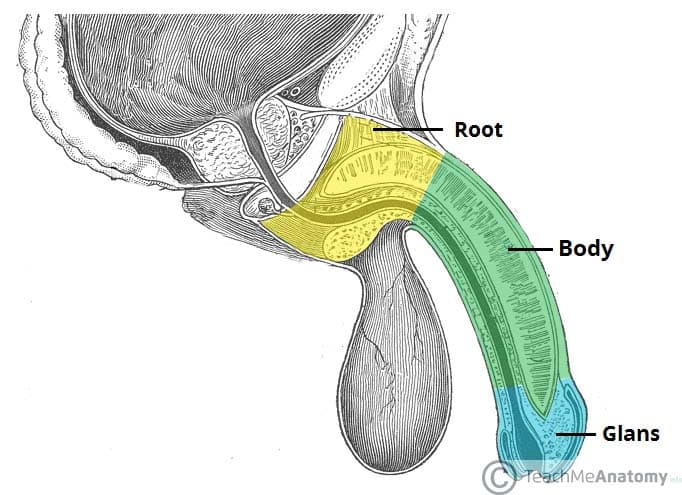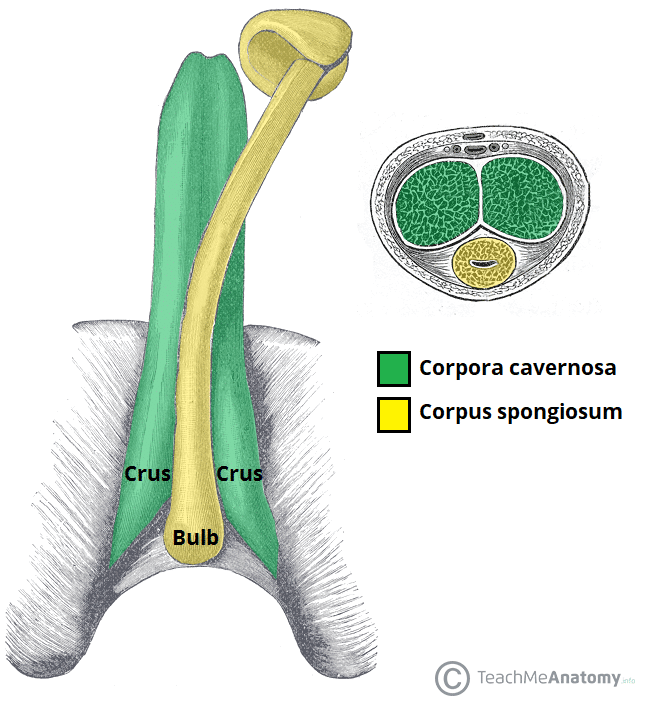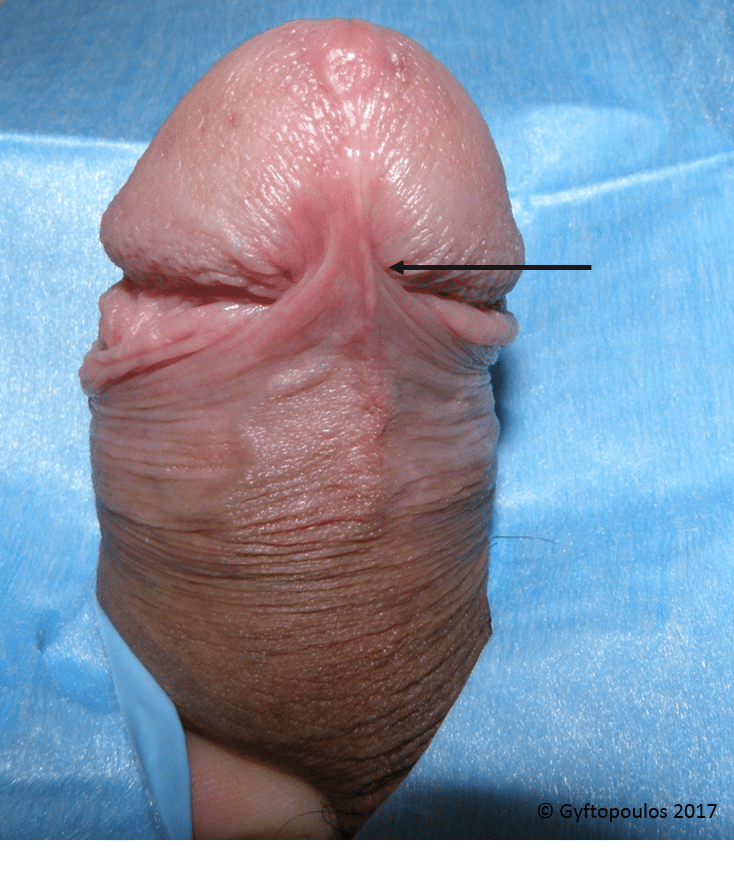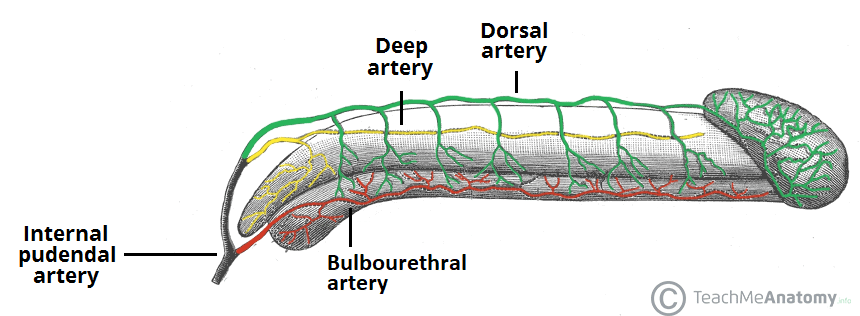The penis is an external organ of the male reproductive system. It has two main functions:
- Sexual intercourse – During erotic stimulation, the penis undergoes erection, becoming engorged with blood. Following emission, (mixing of the components of semen in the prostatic urethra) ejaculation can occur, whereby semen moves out of the urethra through the external urethral orifice. Finally, the penis undergoes remission, returning to a flaccid state.
- Micturition – The penis also has an important urinary role. It contains the urethra, which carries urine from the bladder to the external urethral orifice, where it is expelled from the body.
In this article, we will look at the functions and structure of the penis and how these give rise to certain clinical conditions.
Note: In the anatomical position the penis is erect, so the dorsal side is that closest to the abdomen and the ventral side is closest to the testes.
Structure of the Penis
The penis can be anatomically divided into three parts:
- Root – the most proximal, fixed part of the penis. It is located in the superficial perineal pouch of the pelvic floor, and is not visible externally. The root contains three erectile tissues (two crura and bulb of the penis), and two muscles (ischiocavernosus and bulbospongiosus).
- Body – the free part of the penis, located between the root and glans. It is suspended from the pubic symphysis. It is composed of three cylinders of erectile tissue – two corpora cavernosa, and the corpus spongiosum.
- Glans – the most distal part of the of penis. It is conical in shape, and is formed by the distal expansion of the corpus spongiosum. This contains the opening of the urethra, termed the external urethral orifice.
Erectile Tissues
The erectile tissues fill with blood during sexual arousal, producing an erection. The root and body of the penis are spanned by three masses of erectile tissue.
In the root, these tissues are known as the left and right crura, and the bulb of the penis. The bulb is situated in the midline of the penile root, and is traversed by the urethra. The left and right crura are located laterally; attached to the ipsilateral ischial ramus, and covered by the paired ischiocavernosal muscles.
The erectile tissues continue into the body of the penis. The left and right crura continue anteriorly into the dorsal part of the penis – they form the two corpora cavernosa. They are separated by the septum of the penis, although often incompletely. The bulb forms the corpus spongiosum, which lies ventrally. The male urethra runs through the corpus spongiosum – to prevent it becoming occluded during erection the corpus spongiosum fills to a reduced pressure.
Distally, the corpus spongiosum expands to form the glans penis.
Muscles
There are four muscles located in the root of the penis:
- Bulbospongiosus (x2) – associated with the bulb of the penis. It contracts to empty the spongy urethra of any residual semen and urine. The anterior fibres also aid in maintaining erection by increasing the pressure in the bulb of the penis.
- Ischiocavernosus (x2) – surrounds the left and right crura of the penis. It contracts to force blood from the cavernous spaces in the crura into the corpora cavernosa – this helps maintain erection.
Fascial Coverings
Each mass of erectile tissue has two fascial coverings. The most superficial layer, immediately under the skin, is the external fascia of Colles (which is in continuity with the fascia of Scarpa which covers the abdominal wall).
A deeper stratum is the deep fascia of the penis (also known as Buck’s fascia). This is a continuation of the deep perineal fascia, and forms a strong membranous covering which holds all three erectile tissues together.
Underneath the deep fascia is the strong fascia called tunica albuginea, forming an individual capsule around each cavernous body and fused in the midline. The incomplete septum between the two corpora is comprised of tunica albuginea.
Ligaments
The root of the penis is supported by two ligaments, which attach it to the surrounding structures:
- Suspensory ligament – a condensation of deep fascia. It connects the erectile bodies of the penis to the pubic symphysis.
- Fundiform ligament – a condensation of abdominal subcutaneous tissue. It runs down from the linea alba, surrounding the penis like a sling, and attaching to the pubic symphysis.
Skin
The skin of the penis is more heavily pigmented than that of the rest of the body. It is connected to the underlying fascias by loose connective tissue.
The prepuce (foreskin) is a double layer of skin and fascia, located at the neck of the glans. It covers the glans to a variable extent. The prepuce is connected to the surface of the glans by the frenulum, a median fold of skin on the ventral surface of the penis. The potential space between the glans and prepuce is termed the preputial sac.
Neurovascular Supply
Vasculature
The penis receives arterial supply from three sources:
- Dorsal arteries of the penis
- Deep arteries of the penis
- Bulbourethral artery
These arteries are all branches of the internal pudendal artery. This vessel arises from the anterior division of the internal iliac artery.
Venous blood is drained from the penis by paired veins. The cavernous spaces are drained by the deep dorsal vein of the penis – this empties into the prostatic venous plexus. The superficial dorsal veins drain the superficial structures of the penis, such as the skin and cutaneous tissues.
Innervation
The penis is supplied by S2-S4 spinal cord segments and spinal ganglia.
Sensory and sympathetic innervation to the skin and glans penis is supplied by the dorsal nerve of the penis, a branch of the pudendal nerve.
Parasympathetic innervation is carried by cavernous nerves from the peri-prostatic nerve plexus, and is responsible for the vascular changes which cause erection.
Clinical Relevance: Phimosis and Paraphimosis
Phimosis
Phimosis is a condition where the prepuce fits tightly over the glans and cannot be retracted. This condition may be congenital, but may also arise later in life due to inflammation and contraction of the preputial skin. It may cause local irritation due to accumulation of smegma (oily secretions produced by the penile skin) or even predispose to infections.
The main disadvantage is the inability to apply local hygiene – untreated phimosis is even related to penile carcinoma.
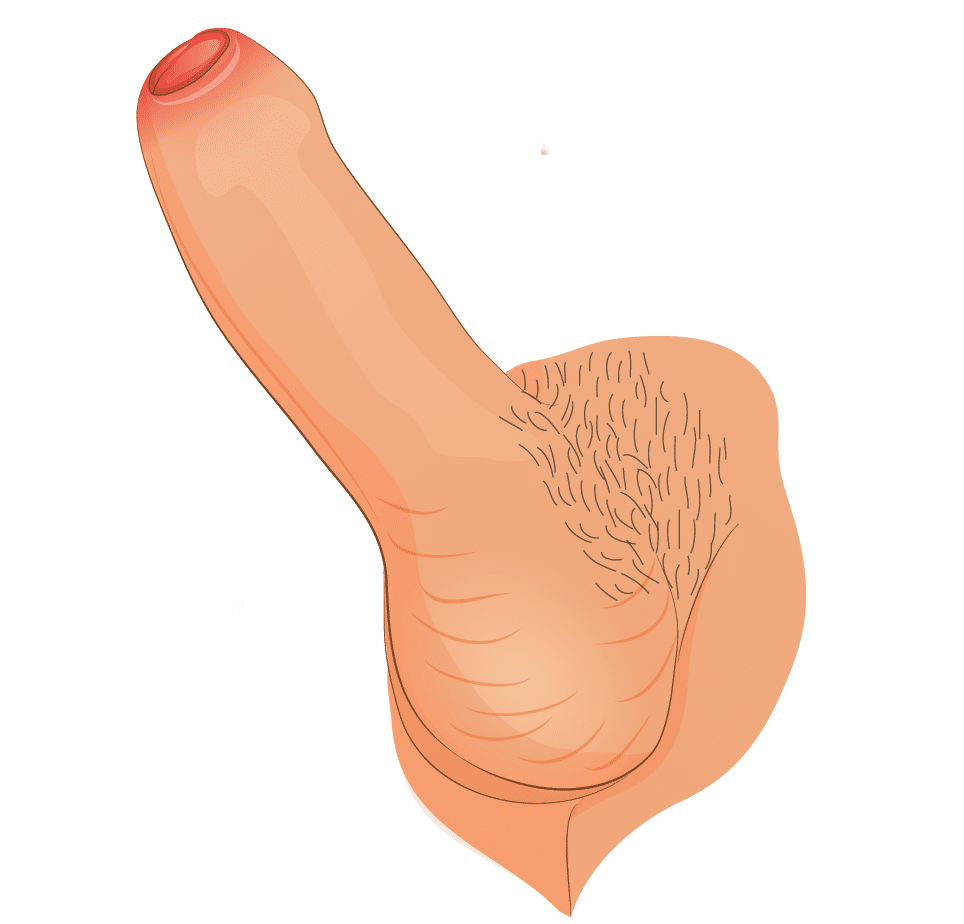
Fig 5 – Phimosis of the penis, where the foreskin cannot be retracted.
Paraphimosis
Paraphimosis is an acute condition that occurs when a tight prepuce is left retracted under the glans: this may cause oedema of the soft prepuce and further strangulation occurs.
Clinical Relevance: Functional Defects of the Penis
Erectile Dysfunction
Erectile dysfunction is the inability to maintain an erection. It is a common condition, which may result from a number of causes, most commonly of a vascular aetiology (such as hypertension, hypercholesterolaemia, smoking or diabetes). Psychological causes include anxiety and depression.
Treatment is based on the aetiology. Most commonly used medications include PDE5 inhibitors, which inactivate the enzyme phosphodiesterase 5 at the corpora cavernosa level, relaxing the smooth muscle fibres of the corpora and the vessels. In this way, an improved arterial flow is achieved.
Priapism
Priapism is a serious condition where erection persists beyond or without sexual stimulation. It is almost always painful and results from blood becoming trapped in the erectile bodies, with no arterial flow.
Priapism that persists for more than four hours is a medical emergency: if left untreated, it may lead to corporal scarring and permanent erectile dysfunction.
